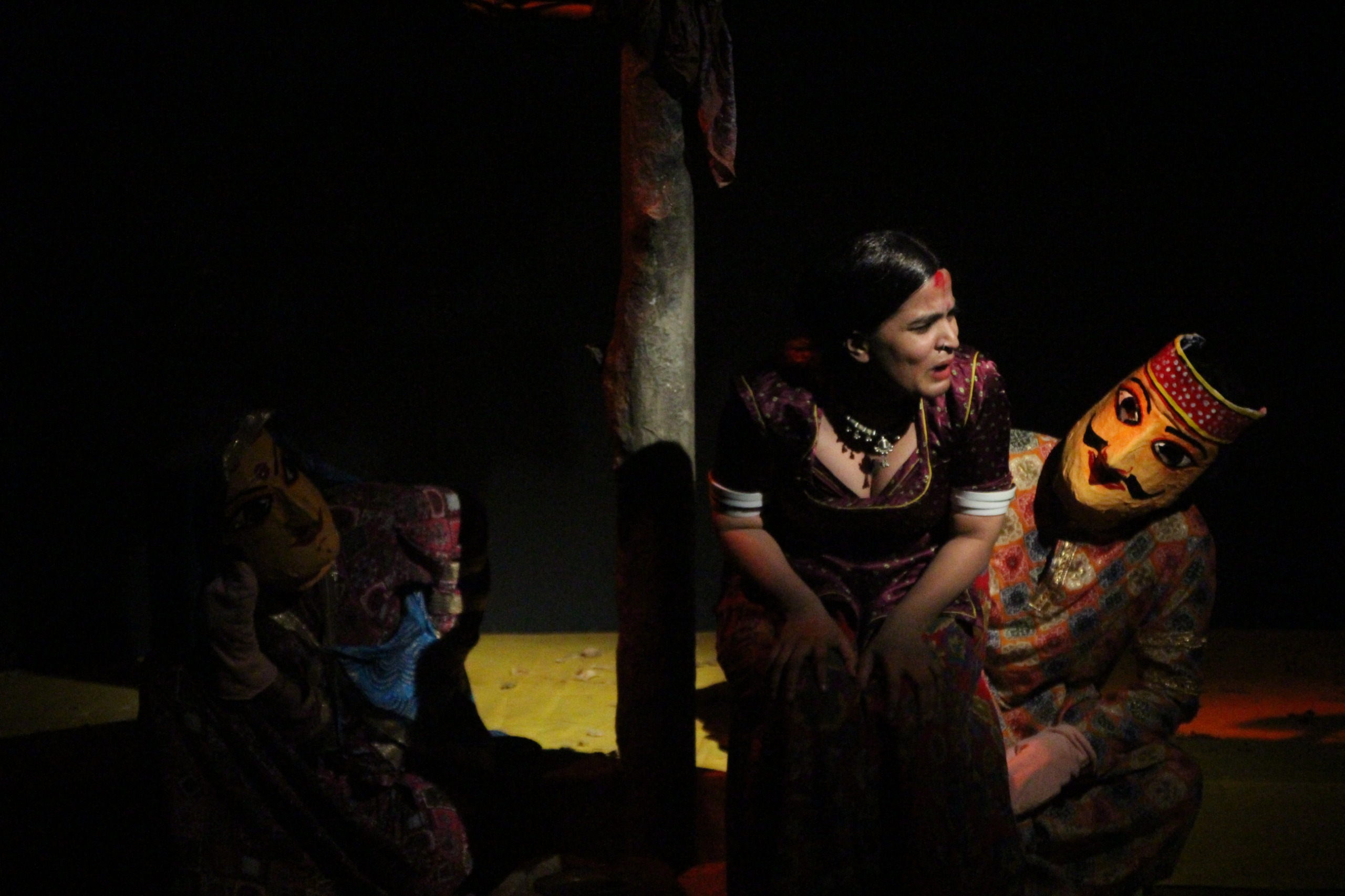A Review of the Performance of the Play Kathputaliyan
By Dr. Paritosh Chandra Dugar

The performance of the play Kathputaliyan in the Darpan auditorium of Shilpgram, Udaipur, on September 8, 2024, marked the conclusion of the three-day drama festival organized by West Zone Cultural Centre in collaboration with Jawahar Kala Kendra, Jaipur. As a dramatic adaptation of Manisha Kulshreshtha’s story “Kathputaliyan,” the play was directed by Anurag Singh Rathore.
The play relates the story of Ramkishan, a skilled puppeteer, who begins to look after his infant child after his wife’s untimely death. One day, he is married to a young girl, Sugna, who is already infatuated with Jaggu guide, an imposter. Jaggu easily seduces Sugna into surrendering herself to him by making false promises to marry her. But after marriage, when Sugna sees the selfless devotion of Ramkishan, her consciousness is awakened to realize the meaning of true love. Then, she gets rid of Jaggu and returns to Ramkishan to be a faithful wife and a loving mother. Thematically, the play tries to convey how one, driven by selfish desires and carnal passions, is reduced to a puppet, an entity bereft of human consciousness, and how one, like Sugna, under the control of mere passions, loses the capacity to distinguish between right and wrong, true and false, and infatuation and genuine love.
The play, at the outset, powerfully introduced Ramkishan’s conflict, his loss, and his challenge to take care of his child as a solo parent. Light and music were discreetly used to augment the theatrical impact of the situation.
As an artist, Narayan Singh portrayed Ramkishan’s character commendably. He expressed Ramkishan’s trauma effectively by consistently maintaining certain dullness in his voice and movement. Later, his calm expressions as Sugna’s husband seemed natural and represented Ramkishan’s attitude to his wife with full fidelity.
Shivangi Bairwa’s performance in Sugna’s role was equally commendable. She could flawlessly achieve the transformation from a seduced woman to a woman who was capable of distinguishing between infatuation and true love through her forceful dialogues and expressive gestures.
Dushyant Harit Vyas appeared impressive in his role as Jaggu. However, occasionally, he fell prey to overdoing in his anxiety to copy a typical Bollywood ‘mavali.’ His use of local dialect and Hindi in his dialogues presented an interesting mix.
The other artists, including Aradhana Sharma as Dhapu, Dinesh Chaudhary as Sugna’s brother, Pooja Gurjar as Sugna’s mother, and Kuldeep Medatiya as Mama, performed well. Prabhu Prajapat, Vibhuti Chaudary, Hitesh Nalwaya, Ankit Shah, and Naveen Kumar Chaubisa as male villagers and puppets and Garima Pancholi and Divya Oberoi as female villagers contributed significantly to heightening the dramatic and thematic impact of the play.
Music by Ravi Yadav, Hitesh Nalwaya, Divyansh, Karan Gurjar, and Shivangi Bairwa , light design by Ravi Ojha , and stage design and props by Harshit Vaishnav and K.G. Kadam were all well done.
The performance, by all means, captivated the theatre-lovers of Udaipur.
साभार :
© CopyRight Pressnote.in | A Avid Web Solutions Venture.






